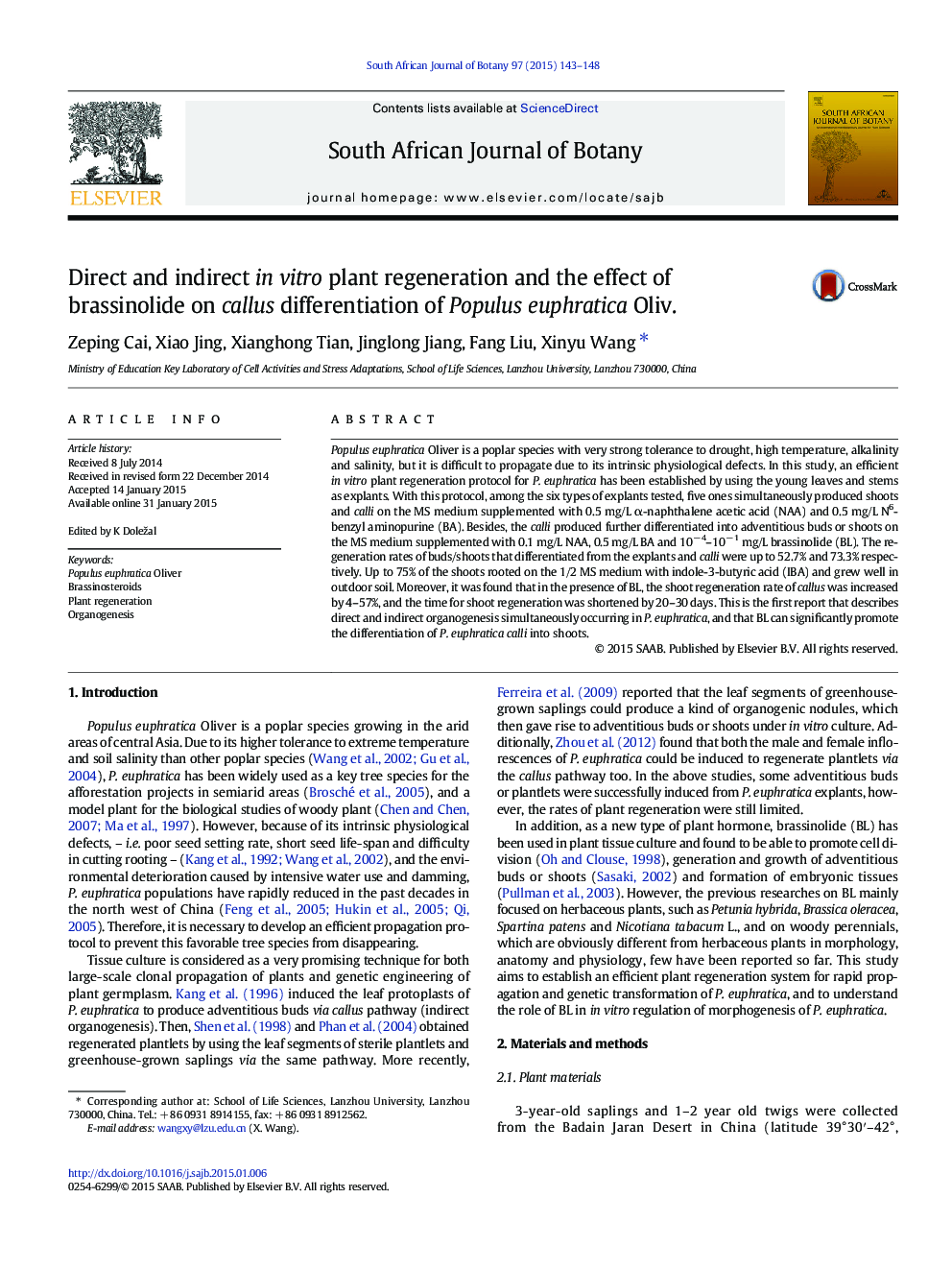| کد مقاله | کد نشریه | سال انتشار | مقاله انگلیسی | نسخه تمام متن |
|---|---|---|---|---|
| 4520570 | 1625161 | 2015 | 6 صفحه PDF | دانلود رایگان |

• An efficient plant propagation system for P. euphratica has been established.
• Brassinolide (BL), a new kind of plant growth regulator, has been used to induce organogenesis of P. euphratica calli.
• This is the first report that direct and indirect organogenesis simultaneously occurring in P. euphratica.
Populus euphratica Oliver is a poplar species with very strong tolerance to drought, high temperature, alkalinity and salinity, but it is difficult to propagate due to its intrinsic physiological defects. In this study, an efficient in vitro plant regeneration protocol for P. euphratica has been established by using the young leaves and stems as explants. With this protocol, among the six types of explants tested, five ones simultaneously produced shoots and calli on the MS medium supplemented with 0.5 mg/L α-naphthalene acetic acid (NAA) and 0.5 mg/L N6-benzyl aminopurine (BA). Besides, the calli produced further differentiated into adventitious buds or shoots on the MS medium supplemented with 0.1 mg/L NAA, 0.5 mg/L BA and 10− 4–10− 1 mg/L brassinolide (BL). The regeneration rates of buds/shoots that differentiated from the explants and calli were up to 52.7% and 73.3% respectively. Up to 75% of the shoots rooted on the 1/2 MS medium with indole-3-butyric acid (IBA) and grew well in outdoor soil. Moreover, it was found that in the presence of BL, the shoot regeneration rate of callus was increased by 4–57%, and the time for shoot regeneration was shortened by 20–30 days. This is the first report that describes direct and indirect organogenesis simultaneously occurring in P. euphratica, and that BL can significantly promote the differentiation of P. euphratica calli into shoots.
Journal: South African Journal of Botany - Volume 97, March 2015, Pages 143–148